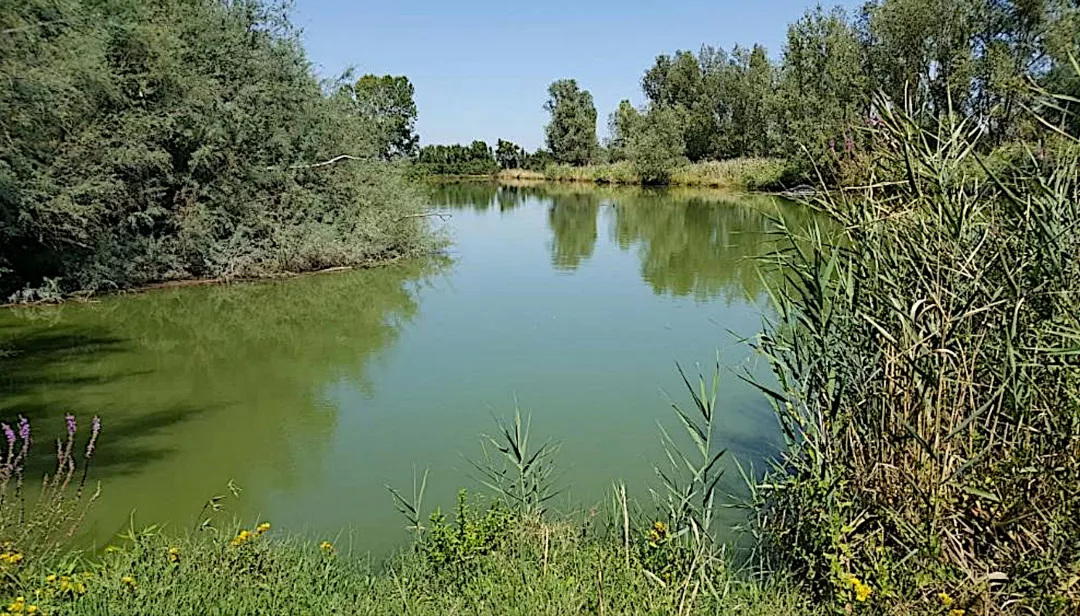General information
RDP Priority
- P4. Ecosystems management
RDP Focus Area
- 4A: Biodiversity restoration, preservation & enhancement
RDP Measure
- M10: Agri-environment-climate
Summary
Agricola Braccianti MASSARI is a large agricultural cooperative that manages some 2 400 hectares across four municipalities of the Ravenna province, in Emilia Romagna. 160 hectares of the cooperative’s land is not suitable for agriculture, so the cooperative wanted to enhance its biodiversity. Agri-environment-climate support helped start a 20-year conservation plan covering nearly 20 ha of wet grasslands, and a 10-year management plan covering approx. 127 ha of several semi-natural habitats including hedgerows, tree lines, small woods, ponds, etc.
Results
The overall conservation status of the two managed areas has been improved, and both plant and animal biodiversity has increased.
It has become easier to control orchard pests using less insecticides.
Wolves are now present in the managed areas and this has made it easier to control coypu.
The presence and maintenance of the semi-natural habitats helps to separate and protect the land which is managed organically.

Promoter
Cooperativa Agricola Braccianti MASSARI
Funding
Total budget 133 132.00 (EUR) - annual
EAFRD 57 407.00 (EUR) - annual
National/Regional 75 725.00 (EUR) - annual
Resources
Documents
Cooperativa Agricola Braccianti - sustainable farm management focused on protecting biodiversity
(PDF – 3.5 MB)
Links
Context
Agricola Braccianti MASSARI is a large agricultural cooperative established in 2004 from the merger of two smaller cooperatives. It farms 2 400 hectares across four municipalities of the Ravenna province, in Emilia Romagna. Some 600 ha of the cooperative’s land has been converted to organic since the late 1990s. Another 160 hectares of the cooperative’s land is not suitable for agriculture and thus, the cooperative needed to find different ways to manage this land.
Objectives
The main aim of this project was to enhance the biodiversity value of a significant part of the cooperative’s land. The land devoted to biodiversity restoration would complement the cultivated land (a combination of organic and integrated) and the cooperative’s on-going agrotourism activities. In addition, it would create a more balanced agro ecosystem that would also protect the cooperative’s orchards.
Activities
The cooperative used agri-environment-climate funding for the first part of a 20-year conservation plan covering nearly 20 ha of humid grasslands, and the adoption of a 10-year management plan covering approx. 127 ha of semi-natural habitats including hedgerows, tree lines, small woods, ponds, etc.
Works involve planting, pruning, mowing and other vegetation control actions. The humid grassland areas require a minimum level of water submersion according to specific conservation requirements.
Another important action concerning both plans was the monitoring and removal of invasive species such as the nutria (Myocastor coypus) which can cause extensive damage to wetlands and agricultural crops.
Every year, the cooperative checks some 23 indicators/operations prescribed by the regional authority in the approved management plan, in order to monitor the state of the two types of semi-natural areas. Agri-chemicals are not used and the semi-natural habitats are maintained by mowing on a yearly basis at specific times to avoid disturbing the nesting of some protected bird species.
Main results
The overall conservation status of the two managed areas has been greatly improved. Both plant and animal biodiversity has increased.
The landscape scenery has been diversified and improved.
The indirect results deriving from the implementation of the two management plans are:
- It has become easier to control the insects that cause damage to the orchards, and the use of chemicals has been reduced.
- Recently, wolves have been observed in the managed areas. This has made it easier to control coypu numbers, with captures decreasing from around 350/year to 35/year in 2022.
- The presence and maintenance of the semi-natural habitats helps to separate and protect the land which is managed organically.
Key lessons
Implementing conservation actions to foster the overall biodiversity of seminatural farm habitats is feasible, especially on big farms where there is enough space to implement a range of different land management options.
“Implementing the two RDP sub-measures requires careful planning and also some tiring paperwork on a yearly basis.”
Andrea Dalmonte
“We are very satisfied with the results we are achieving in terms of biodiversity conservation. This is confirmed by the increasing number of visits that the regional authority is organising with external experts and administrators to our property.”
Andrea Dalmonte
